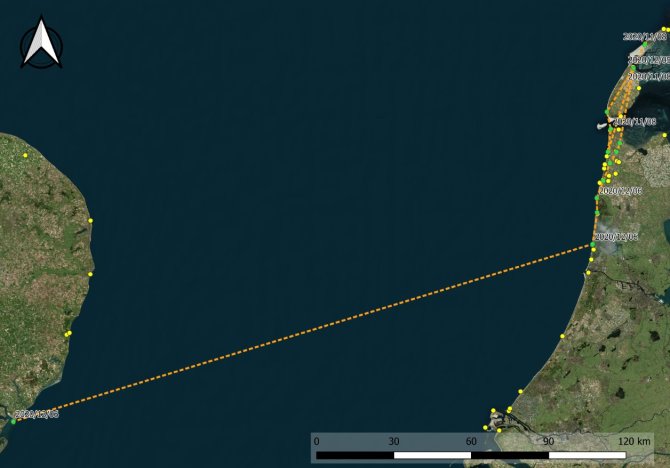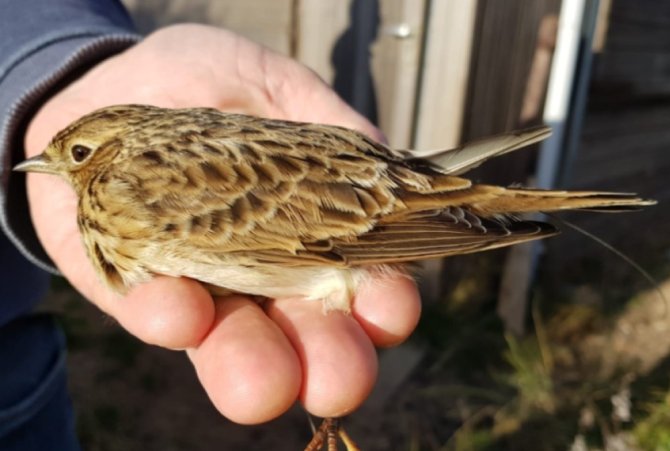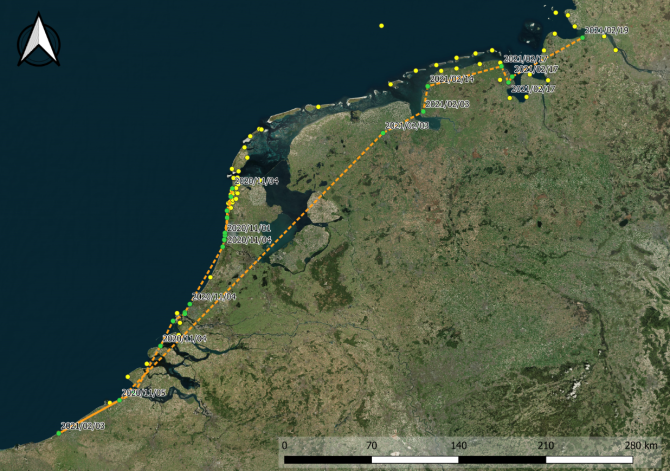
Project
Telemetry study songbirds
Many bird species are in decline. For example, the numbers of breeding starlings and skylarks in the Netherlands have decreased significantly due to the intensification of agriculture. Both species are also vulnerable to collisions with wind turbines which they encounter during migration, both overland and oversea. In order to avoid bird fatalities, it is crucial to assess the most important flight routes and know when peaks in migration activity occur.
Wageningen Marine Research and Wageningen Environmental Research, in cooperation with the ringing sites Vlieland and Castricum, conduct telemetry research into these species. Each year, we tag about thirty skylarks and thirty starlings and follow their flight movements with the MOTUS telemetry network. Preliminary results show that skylarks mainly migrate at night and often follow the coastline, although some have flown over the German Bight during spring migration. Starlings are usually active during the day and show a lot of back and forth movements, but when the conditions are right, they can cross the North Sea within a few hours.



Next steps
We will use the data to develop a model which predicts, based on environmental conditions (e.g. temperature and wind direction), when and where most flight activity can be expected. With this information, we can advise wind farm operators and the Dutch government where suitable locations for new wind farms are located. We will also be able to predict peaks in flight activity when it would be better not to operate wind turbines in order to avoid fatalities at these specific moments.
